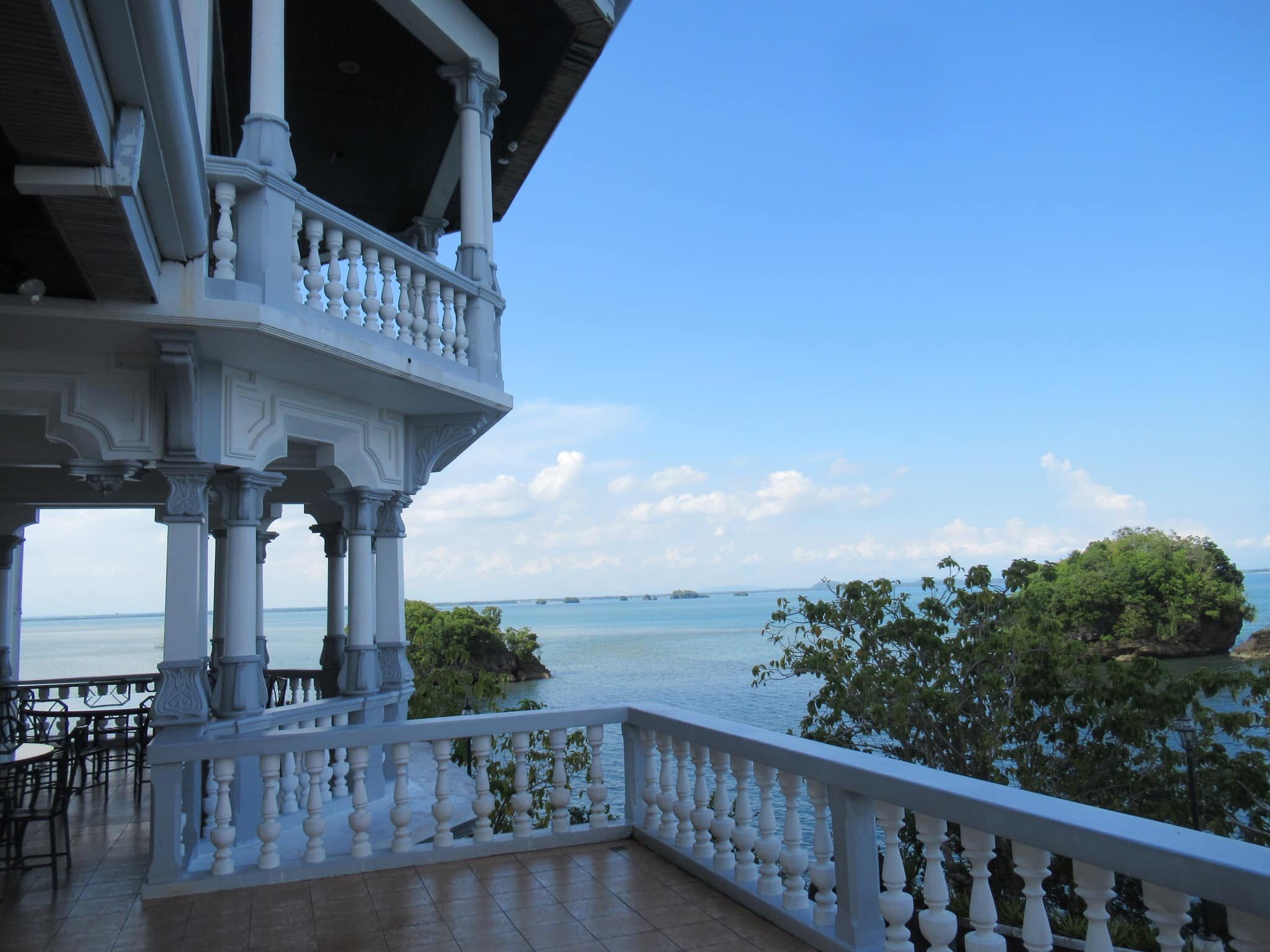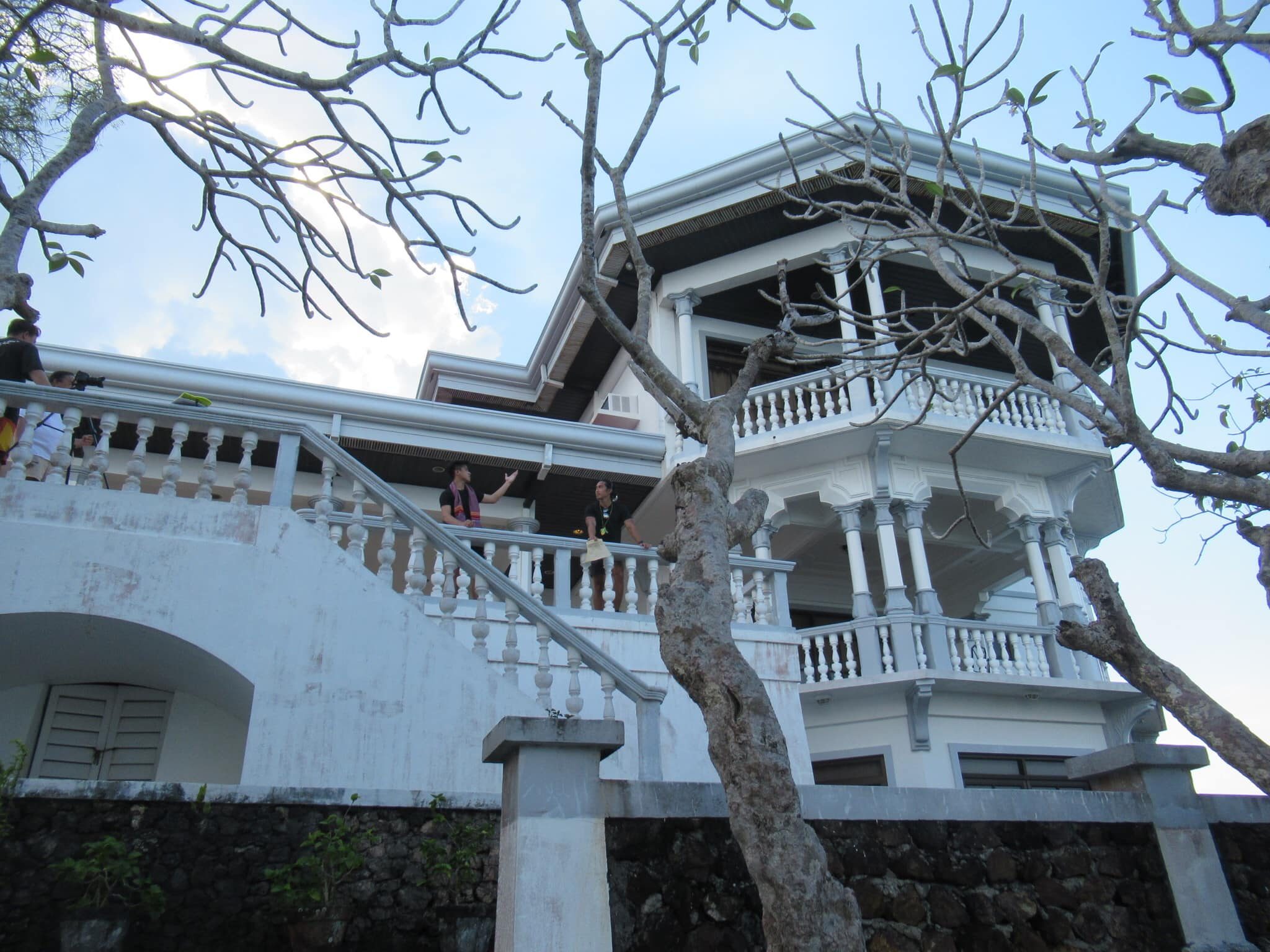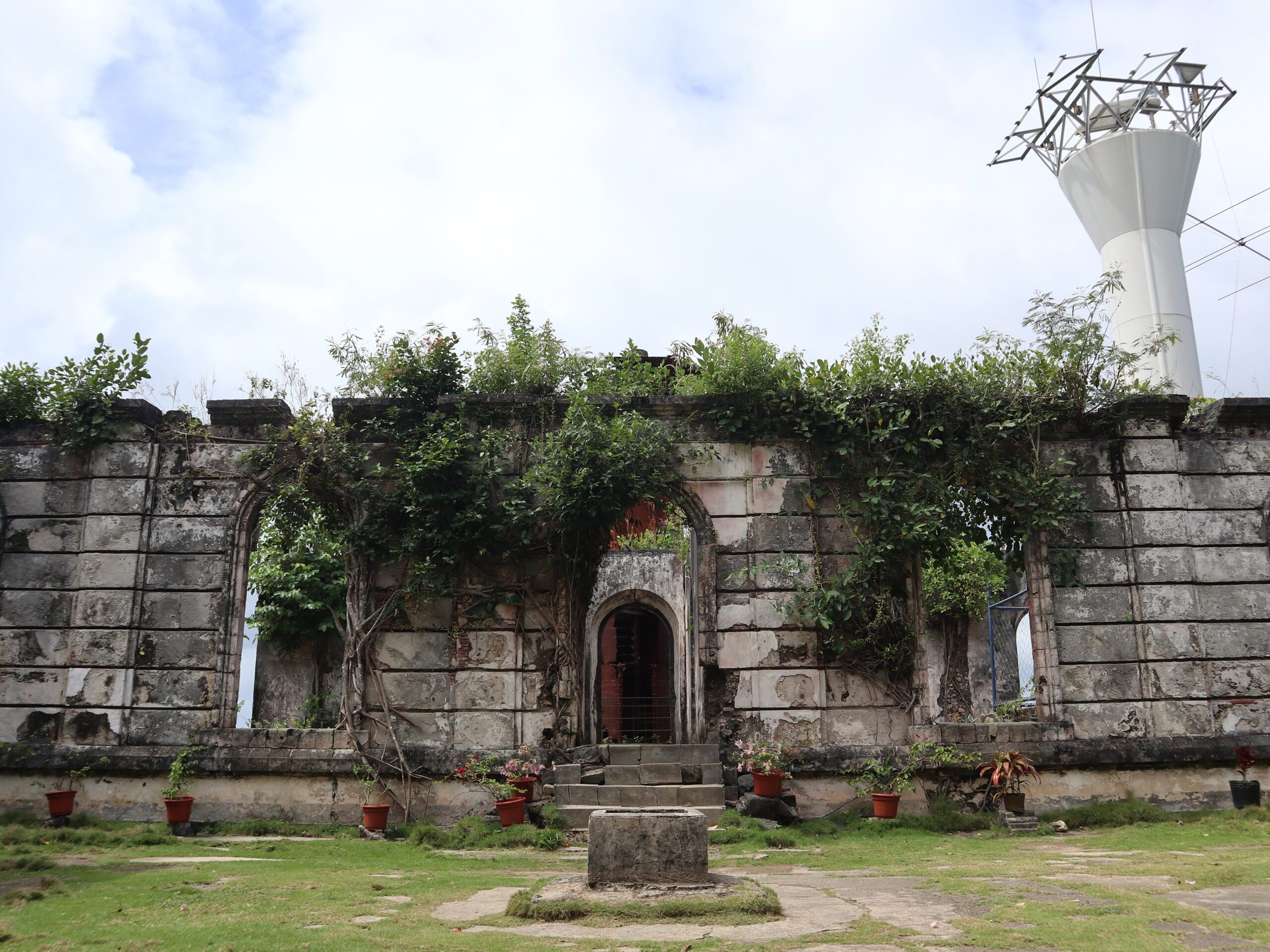SUMMARY
This is AI generated summarization, which may have errors. For context, always refer to the full article.
![[Ilonggo Notes] Guimaras: Geared up for success](https://www.rappler.com/tachyon/2024/05/Ilonggo-Notes-Guimaras-May-6-2024.jpg)
Across the strait from the area once called “La Punta” back in the 16th century rises an island whose importance to the development of Iloilo cannot be overemphasized. It protects the Iloilo harbor from storms and strong winds, served as a look-out point for marauders from the south, the Dutch and the British, who attacked the coasts of Arevalo and Oton in the 17th and 18th centuries.
Before the advent of waterworks systems, this island was the major source of drinking water for Iloilo. This is the island of Guimaras, southeast of Panay and northwest of Negros Island.
In the past it was a part of Iloilo, then from 1966, a “sub-province” of Iloilo; in 1992 a plebiscite was held. Residents voted to have a separate province; this was enacted into law and a new governor was appointed. In 1995, two other municipalities were created – Sibunag and San Lorenzo, bringing to five the total number of municipalities, with the older towns of Buenavista, Jordan and Nueva Valencia. With 98 barangays, 60,500 hectares and just about 200,000 population, it is one of the smallest provinces in the country.
Hiligaynon is the main language spoken. Jordan, the capital, is considered the primary commercial center and gateway to Guimaras. Buenavista, the oldest municipality, is considered the secondary growth center and alternative gateway. It is here where the bridge connecting Panay to Guimaras will be built. Nueva Valencia is the tourism capital and major fishing center of the province. San Lorenzo and Sibunag are major agri-fishery producers, cargo port, and gateway to Negros. It has a total coastline length of 470 kilometers, including several scattered islets.
Guimaras is a rather unusual name, Portuguese in origin. R. Morales Maza, in “The Augustinians in the Philippines” (1987), surmises that a homesick Portuguese member of the crew of Fernhao de Magalhaes (Ferdinand Magellan) might have named the island to commemorate the first capital of Portugal, and the birthplace of Portuguese nationality, which was “Guimaraes.”
In 1858, Sir John Bowring, the British Governor of Hong Kong, scholar, and author visited Panay. He quoted extensively from reports of the young British vice-consul, Nicholas Loney; these reports show the economic and social developments of Iloilo at the time. Bowring noted that Guimaras was important to the newly opened international port of Iloilo by making it safe to navigation and offering sheltered passage and anchorage.

In 1887, Dean C. Worcester, then a zoology professor at the University of Michigan, came to collect specimens of Philippine fauna. He wrote, “Guimaras is extremely healthful. During the month we remained in Salag Dako, we regained our health and gathered much valuable materials…. Guimaras is rough and hilly, but without high mountains; the whole island is covered with a cap of limestone and the soil apparently poor, and it is perhaps for this reason that coconut palms are so abundant…” Parlaying his knowledge of the Philippines to good advantage, he later became the powerful Secretary of Interior, a member of the Philippine Commission, and a successful author and entrepreneur; however, in his writings, he often portrayed Filipinos as exotic and inferior, incapable of self-government, and firmly believed in American imperialism.
Two female writers, one British (Mrs. Campbell Dauncey) and one American (Emily Bronson Conger), published books that described visits to Guimaras. They took trips via a paraw (sail boat), staying in Nagaba and Salag Dako (now parts of Jordan), sometime between 1900 to 1905.
I have vivid memories of Guimaras – as a boy, Dad would take me and my brother for a trek to “Bala-an Bukid” (Holy Mountain), a point on the island where there was a big cross and a small chapel, that was a pilgrimage site. Going up, one went through the fourteen stations of the cross. We’d huff and puff, stop and pray, and at the top be rewarded by a cool drink, snacks, and a glorious view of Iloilo City across the strait. One holy week, I watched “Pagtaltal sa Guimaras” which entailed a rather gory re-enactment of the crucifixion.
Later, Guimaras would become a site for field trips in Biology, when we’d visit a marine reserve and islands near it, one called “Taklong” (Snail) island, and the “Isla ng pulang pasayan” (Isle of the red shrimps) famed for a rare, local variety of shrimp that was unusually reddish in color, as if it had been cooked.

General Douglas MacArthur, decades before his “I shall return” pledge, has a major link to Guimaras. Fresh from West Point as a 2nd Lieutenant, he came to Iloilo in 1903 as the head of the company of the Corps of Engineers. In Iloilo, he constructed roads and part of the wharf along Muelle Loney. His headquarters were at Camp Jossman in Barrio Supang, Buenavista, where he also built the wharf and the road. He survived an attempt on his life, killing two who attacked him. In 1992, a resolution was passed to change the name of Sto. Rosario Wharf to Gen. MacArthur’s Wharf.
Since Guimaras is but 15 minutes away from Iloilo via fast craft or Ro-ro, with dozens of trips a day, it is quite convenient for a day trip. Roads crisscrossing the island have all been upgraded. There are several resorts and fine beaches where one can stay overnight or for several days, and the main attractions include the following:
Trappist Monastery. Chapel and Souvenir shop, a religious monastic order which observes a vow of silence. A favorite site for spiritual retreats; The monks are tillers of the soil, known for their farm produce and handicrafts, and employ many locals. They run a visitor center and souvenir shop; good buys include mango jam, mango otap, butterscotch, cashew and coffees.
Tultul, an artisanal salt sold in small blocks and made from seawater and coconut milk, is produced exclusively in Barangay Hoskyn, also in Jordan.
Roca Encantada or “Enchanted Rock”. This grand hilltop house, in Buenavista, was built in 1910 as a vacation house of the Lopez family. In 2002, the house was declared a heritage site by the National Historical Commission. The house overlooks the Islas de Siete Pecados – or the Islands of the Seven Sins. According to legend, there were seven sisters who wanted to go to a dance in Dumangas, Iloilo across the sea. Their parents did not want them to go, but they disobeyed. Unfortunately, their boat sank and they all perished. The next day, the townspeople were surprised to find seven islands had sprung from the sea. They called the islands “the seven sins” in remembrance of the tragic event.

Guisi Lighthouse, formerly “Faro de Punta Luzaran.” This place is so-called because many boats between Panay and Guimaras had their sails torn (na-guisi) by the strong winds. This was an active trading port between Panay before the port of Jordan was built, and also the place where the torn sails were repaired. It is the most south-eastern point of Guimaras island; the lighthouse was first built in 1894-96, to help guide boats between the straits of Iloilo and Guimaras. The remains of the old lighthouse and the abandoned former quarters of the staff, now overgrown in parts by jungle foliage, give the place an otherworldly feel.

Church of Navalas. The oldest Roman Catholic Church in Guimaras, built in the 1880s by local residents and financed by Don Miguel Jayme, is petite-looking, and made of limestone blocks glued together by a mixture of sticky tree sap and lime. The church façade, main entrance gates and belfry are well-preserved. The bell‘s sound could be heard about three barangays away. Muslim raiders once dumped the bell into the sea. The church was renovated in the late 90s with the support of the European Union (EU).

Finally, who has not swooned over the fabled Guimaras mangoes? This is the first – and only – Philippine product that has been granted Geographic Indicator Status (GIS), as certified by the Intellectual Property Office of the Philippines (IPOPHIL) after passing the thorough examination process of the Bureau of Trademarks. However, the route to GIS started way back in 2013, with the support of the EU, under a technical assistance project. A GI seal certifies a link between the quality, characteristics and reputation of a product and its geographical source. These factors may have been shaped due to environmental influences, such as soil and climate, or/and human factors, such as tradition and local know-how.
This puts it in similar status to products such as Parmigiano Reggiano (Parmesan cheese), Scotch whiskey, and Cambodia’s Kampot Pepper. A typical Guimaras “carabao” mango is ellipsoid, with a rounded crown and an oblong end. Its flesh is meaty, smooth, firm, juicy and non-fibrous, and it weighs at least 160 grams. Sweetness is rated 16-degree Brix (an internationally accepted test standard for sweetness).
These characteristics are attributed to the topography of Guimaras Island which varies from flat to steeply sloping with calcareous and loamy soil, high in calcium and magnesium, and well-drained. The “Manggahan festival” is celebrated during the peak harvest month of May; an “Eat all you can” Mango festival attracts hundreds of visitors. One registers in advance as time slots are allocated. The fee? One hundred pesos for this one-of-a-kind trip to mango heaven. – Rappler.com
Vic Salas is a physician and public health specialist by training, and now retired from international consulting work. He is back in Iloilo City, where he spent his first quarter century.
Add a comment
How does this make you feel?
![[Ilonggo Notes] Exploring Plaza Libertad, Iloilo’s first town square](https://www.rappler.com/tachyon/2024/07/plaza-libertad-guimaras-from-city-hall.jpg?resize=257%2C257&crop=574px%2C0px%2C640px%2C640px)
![[Ilonggo Notes] Putting the spotlight on Ilonggo and regional cinema](https://www.rappler.com/tachyon/2024/04/Screenshot-2024-04-07-at-2.04.59-PM.png?resize=257%2C257&crop=321px%2C0px%2C809px%2C809px)
![[Ilonggo Notes] The foremost Filipino engraver, sadly unremembered, needs to be given his due](https://www.rappler.com/tachyon/2024/03/Figueroa-.jpg?resize=257%2C257&crop=265px%2C0px%2C720px%2C720px)
![[Ilonggo Notes] La Villa Rica de Arevalo: A storied past and bright future](https://www.rappler.com/tachyon/2024/01/from-vic-scaled.jpeg?resize=257%2C257&crop_strategy=attention)





There are no comments yet. Add your comment to start the conversation.